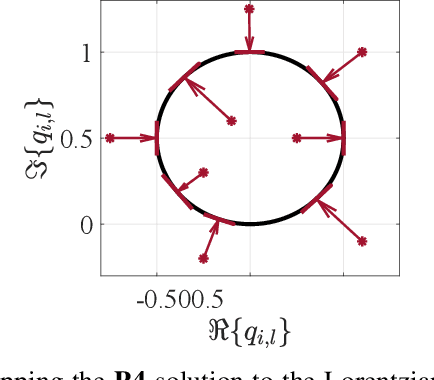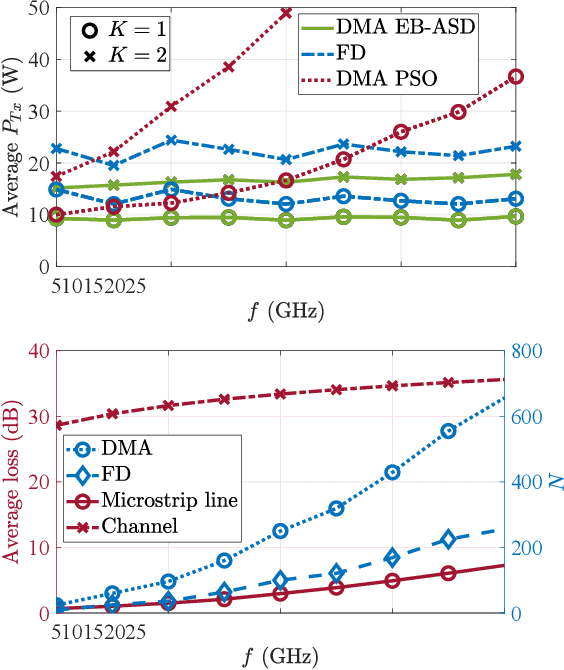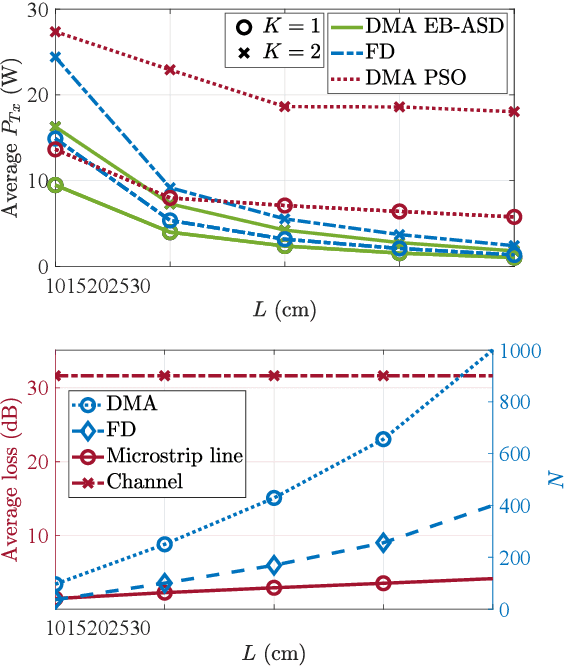Energy Beamforming for RF Wireless Power Transfer with Dynamic Metasurface Antennas
Paper and Code
Jul 03, 2023



Radio frequency (RF) wireless power transfer (WPT) is a promising technology for Internet of Things networks. However, RF-WPT is still energy inefficient, calling for advances in waveform optimization, distributed antenna, and energy beamforming (EB). In particular, EB can compensate for the severe propagation loss by directing beams toward the devices. The EB flexibility depends on the transmitter architecture, existing a trade-off between cost/complexity and degrees of freedom. Thus, simpler architectures such as dynamic metasurface antennas (DMAs) are gaining attention. Herein, we consider an RF-WPT system with a transmit DMA for meeting the EH requirements of multiple devices and formulate an optimization problem for the minimum-power design. First, we provide a mathematical model to capture the frequency-dependant signal propagation effect in the DMA architecture. Next, we propose a solution based on semi-definite programming and alternating optimization. Results show that a DMA-based implementation can outperform a fully-digital structure and that utilizing a larger antenna array can reduce the required transmit power, while the operation frequency does not influence much the performance.
 Add to Chrome
Add to Chrome Add to Firefox
Add to Firefox Add to Edge
Add to Edge